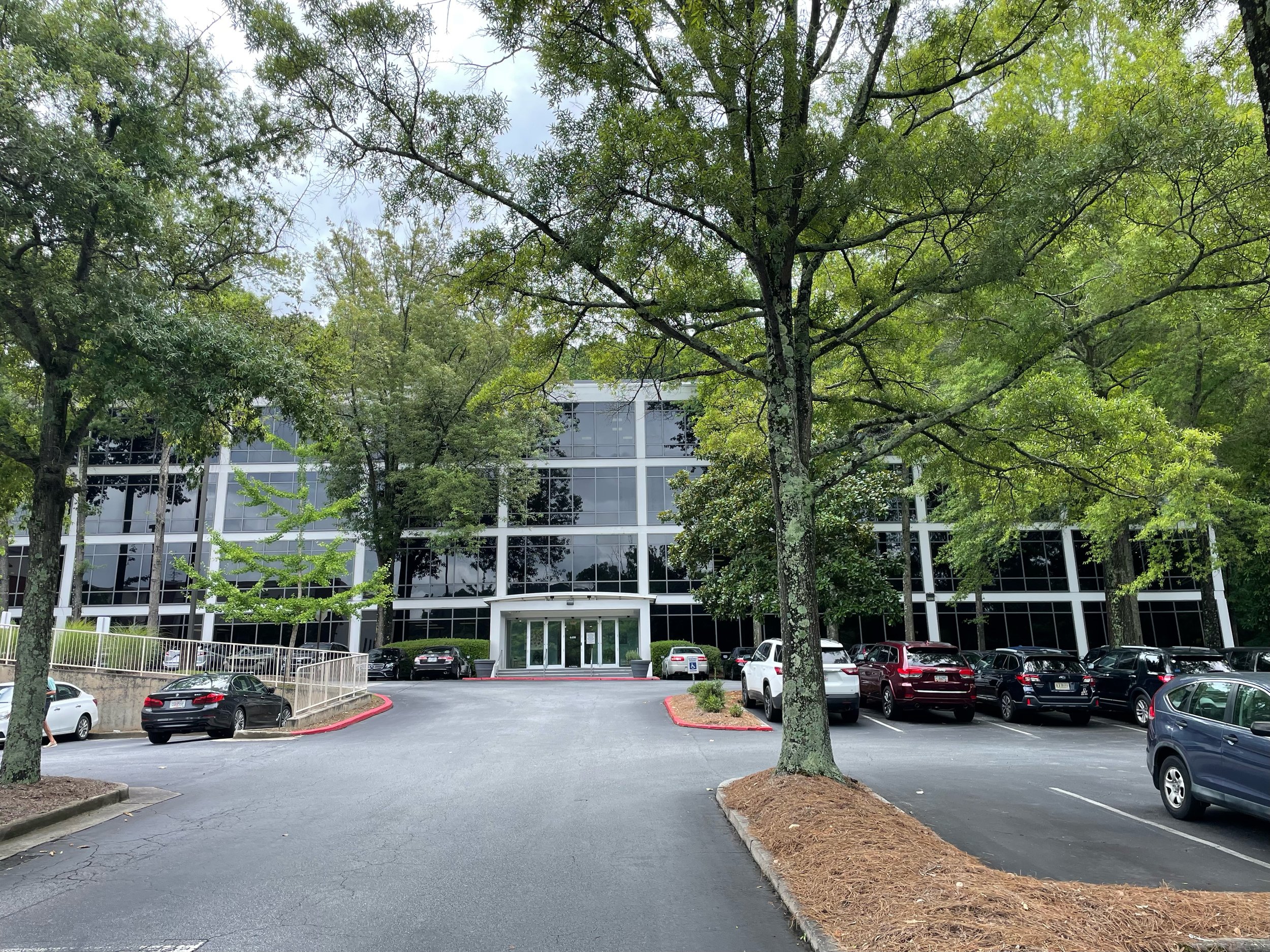
Fitting Bikes
Healing Riders
Body and Bike
Atlanta Bike PT is a clinical bike fitting studio within My Personal PT in Sandy Springs, GA. The goal is to help riders resolve symptoms and improve performance by properly fitting their bikes to their unique bodies and needs.
My Personal PT is a sports/physio therapy clinic for treating muscle imbalance, core strength, flexibility, muscle trigger points, fascial restriction, chronic pain, tendonitis and pelvic/sacroiliac dysfunction. Key exercises for core stability on the bike are included in the bike fitting but if treatment is needed such as dry needling of trigger points, reflex techniques, manual treatment of fascial limitations and sacroiliac dysfunction, it can be found under the same roof.
Injury and dysfunction can be left in the wake of training on a poorly fit bike. ABPT is here to fit the bike and fix the rider.
The Physiotherapist
I’m Kent. I’ve been a PT and cyclist in Atlanta since 1997.
Fitting FAQ
What is bike fitting?
Bike fitting is about making adjustments to the bicycle, shoes and cleats needed for better performance (faster, stronger, longer), and greater comfort (decreasing hand numbness, neck and back pain, knee pain etc) for the cyclist. A good bike fit accounts for the cyclist's goals, riding style, injury history, flexibility, mechanics/movement patterns, and posture before any adjustments or alterations are made to the bike. Riders are unique and a cookie cutter approach to fitting them on bikes only goes so far.
Why does a cyclist’s position on the bike matter?
1. Pain and injury: Our bodies are built for walking and running—not cycling. We weren’t built to remain bent forward bearing weight on our hands for hours. We weren’t built to rotate our pelvises forward to rest our weight forward of the ‘SITS bones’. Cycling requires maintaining an unnatural posture to exert force through your legs thousands of repetitions. This makes cycling the perfect endeavor for overuse injuries. Poor positioning on a bike can lead to pain, numbness, overuse injuries and even sexual dysfunction.
2. Performance: Riders and coaches often try to maximize cycling aerodynamics and performance with fitting. Racers might spend $500+ an hour to get tested in a wind tunnel. All too often, the rider is not flexible or stable enough to maintain such a position and that money is wasted. Thus physical and performance problems can be created with an ill advised fit. Bad position can cancel out most of the advantages of the expensive bicycles and the hours of training. Pain, alone, decreases muscle recruitment and power. By focusing on how the bike fits the unique rider, the fitter can improve performance and enjoyment. Even if you aren’t competing, your position plays one of the greatest roles in your enjoyment of cycling.
Sizing vs. Fitting
Sizing is determining the size of the frame needed. Should you buy a 54cm or 56 cm frame? Should you pick Small or Medium or maybe Medium/Large?
Fitting is the process of adjusting or replacing components (missing from the image to the left) to specifically fit a rider's body and biomechanics on that frame. 10 riders of equal height and weight will be different in leg length, shoulder width, hip flexibility, injuries and more. Fitting adjusts: saddle, post, cleats/pedals, spindles, stem, bars, crank length, hood position etc.
The last 10 years have seen an explosion of online bike sales direct from manufacturers and for used bikes from sites like Pro’s Closet. Accordingly, sizing and fitting are now combined to make sure the cyclist doesn’t spend thousands of dollars on a bike that will disappoint them. It is always less expensive to get everything right at the time of the bike purchase, than to come back later to change out components and deal with injuries.
“Bike fitting is the marriage
of science and good judgement”
-Confusius
Do you need a bike fitting?
If you are experiencing physical symptoms from riding a bike, then a fitting is warranted. Pain in neck, back, knees or groin, and numbness in hands, feet or groin are not normal. Left unresolved, these are the types of complaints that cause injuries and force riders to quit riding.
If you purchased a fairly pricey bike in a shop, you may have had some degree of fitting. That may be good enough for modest riding or for many years. As you age and your flexibility and capacity change, adjustments are needed.
Are all bike fits the same?
No. Fittings vary in length of time, cost, specificity and precision. They can be highly dependent on expensive technology or formulas or the knowledge and discerning eye of the fitter. They are performed by mechanics or coaches or physical therapists.
Atlanta Bike PT is a physiotherapy based bike fitting clinic. Understanding why someone has pain and how the muscles, joints and nervous system work together in sports is what I do for a living. I want to see how flexible, functional and stable a rider is on a bike and what needs to be done to create efficiency, power and comfort. I don’t sell bikes or have an inventory to move, but I do change components and bike dimension to test function on the bike. The goal is to prevent and resolve injury and poor performance. I advise on picking the right bike and bike components and make adjustments to the bike so the cyclist feels better and performs better.
Testimonials
“As a road cyclist since age 12, I was initially skeptical that the modest changes Kent suggested-adjusting cleat position, moving the seat slightly-would make a difference. But after working with Kent following two broken hips, I trusted his judgement. I was stunned that on the next ride I was able to generate an average two extra mph over one of my usual 30 mile routes and my shoulders were relaxed!
Kent is finicky with the small details, details that make a big difference when you spend serious time in the saddle. He approaches the bike fit holistically-the same way he approaches his physical therapy patients: careful observation, adjustment, then results!”
— Richard
“Kent was my physical therapist and did a custom bike fit for me after a traumatic accident. Coming back from two broken legs and 3 months in a wheelchair, I assumed my new mobility limitations were something to grin and bear as I rehabbed on my bike. Kent showed me how wrong I was. He worked extensively with me to understand what worked, what didn’t, and what worked differently. I was left with a bike that fit more comfortably than ever and that worked with my injury recovery rather than against it. Most importantly, he was able to share all his knowledge with me to help me understand what I was feeling and empower me to react and adjust things as my fitness changed. I can’t recommend his services highly enough – he is the perfect combination of committed cyclist and experienced human technician to make your bike work with you.”
— Todd
“After having my road bike safely carry me across the southern tier route of the US, I wished to purchase a gravel bike for additional bike tours. A good friend recommended Kent for measurements.
Using my road bike as a basis, Kent took accurate measurements and suggested some tweaks, which were then used to manufacture the custom gravel bike. The transition to the new bike has been flawless and I have already ridden across Florida, with several more tours planned.”
— Patricia
The Process
A clinical bike fit involves 2.5-3 hours with a 30 minute follow up if needed. The findings and reasons for modifications and home program are explained along the way. Here is a short break down.
the Interview
The interview collects info on: injury and surgical history, strengths and weakness, and problems and goals. As in physiotherapy, the interview gives a starting point that will be compared with the physical findings that come next.
2. Physiotherapy Evaluation
The physiotherapy exam involves a lot of moving parts because the stability, symmetry, muscle inhibition and flexibility of the rider determine how the bike should be set up. It includes:
postural assessment
body frame measurement (leg length, shoulder width)
manual muscle testing
joint mobility testing (spine, knees, hips, feet)
soft tissue assessment (guarding patterns, trigger point in legs and trunk)
special testing (neural and functional)
3. On the Bike
bike measurements are taken
rider positional measurements on the bike are taken
rider is assessed while pedaling with different power outputs. Stability of the pelvis, tracking of the knees, core stability for riding positions are part of this component.
4. Adjustments and Modifications(bike and body)
This is where the rubber meets the road. Changes in cleat position, saddle position, saddle type, crank length, stem length/angle, bar width, brake hood positions can all be tested in the clinic. We see if pelvic stability, or hip, knee and ankle mechanics change. This can be done with your bike on a smart trainer and on the fitting bike at the clinic. Video findings are explained. Recommendations are made for your present or future bike. Advise is given for proper stretching and core stability exercises per the needs of the individual rider.
5. Follow Up
Cycling entails substantial repetitive motion and prolonged postural control. Bike fitting is needed because small positional problems multiplied by thousands of repetitions and hours of effort lead to so many painful outcomes. So changes in the clinic must be tested on the road with the opportunity to follow up if needed . In bike fitting, as with physiotherapy, every change is an experiment. If improvements in flexibility and core strength occur with the home program, fine tuning in the clinic might be warranted at a follow up that would not have been prudent at the initial fitting.












